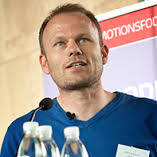28 Jun Consensus Statement Discusses Successful Implementation of Physical Activity in Schools
MedicalResearch.com Interview with:
Peter Krustrup PhD
Professor of Team Sport and Health
Department of Nutrition, Exercise and Sports
Copenhagen Centre for Team Sport and Health
University of Copenhagen, Denmark
Dr. Krustrup discusses ideas formulated in the Copenhagen Consensus Conference 2016: children, youth, and physical activity in schools and during leisure time.
MedicalResearch.com: What is the background for this study? What are the main findings?
Response: A desire to improve children’s and youth’s health, well-being and social inclusion motivated researchers at University of Copenhagen, Department of Nutrition, Exercise and Sports to gather 24 international top level researchers from a variety of academic disciplines at a consensus conference in Denmark on 4-7 April 2016. The aim of the Copenhagen Consensus Conference in 2016 was to reach an evidence-based consensus within the four themes:
1) Physical activity in children and youth: Fitness and health.
2) Physical activity in children and youth: Cognitive functioning
3) Physical activity in children and youth: Engagement, motivation and psychological well-being
4) Physical activity in children and youth: Social inclusion and physical activity implementation strategies.
MedicalResearch.com: What should readers take away from your report?
Response: Our consensus statement emphasizes that cardiorespiratory and muscular fitness levels in children and youth are strong predictors of future cardiometabolic disease, and that vigorous exercise in sports clubs and in school settings has a marked favourable impact on cardiometabolic fitness and other cardiovascular risk factors in children and youth. Furthermore, the consensus statement emphasizes that physical activity before, during and after school promotes scholastic performance in children and youth, and that time taken away from academic lessons in favour of physical activity has been shown not to come at the cost of scholastic performance in children and youth.
Lastly, the consensus statement emphasizes that social inclusion can be promoted by providing equal access to opportunities within physical activity and sports settings regardless of children and young people’s social, cultural, physical and demographic characteristics. Physical activity-based positive youth development programmes that have an intentional curriculum and deliberate training are effective at promoting life skills.
MedicalResearch.com: What recommendations do you have for future research as a result of this study?
Response: We hope that the 21 statements and the 25 recommendations can be of use to contribute to successful implementation of physical activity in schools and sport club settings around the globe. The 25 recommendations includes best practice examples of testing procedures, training concepts and development programmes that are evidence based and ready to be used for large-scale implementation.
Read more in BJSM: Bangsbo et al. 2016,
Krustrup et al. 2016, Larsen et al. 2016, Ørntoft et al. 2016, Fuller et al. 2016.
MedicalResearch.com: Thank you for your contribution to the MedicalResearch.com community.
Citation:
The Copenhagen Consensus Conference 2016: children, youth, and physical activity in schools and during leisure time
Note: Content is Not intended as medical advice. Please consult your health care provider regarding your specific medical condition and questions.
More Medical Research Interviews on MedicalResearch.com
[wysija_form id=”5″]
Last Updated on June 28, 2016 by Marie Benz MD FAAD

